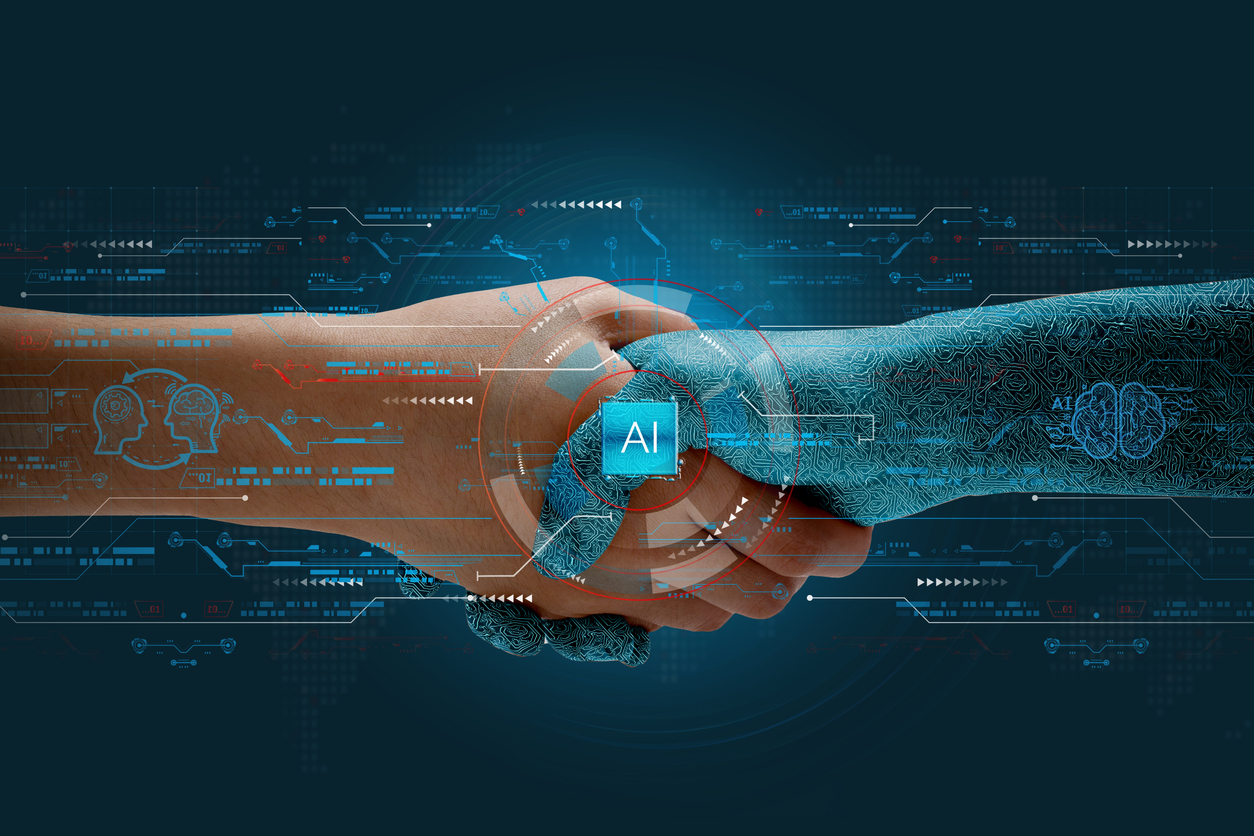A New Era in Procurement AI
Whereas it is impossible to establish the exact date when artificial intelligence was invented, as its development was a long process going back not just years but decades, we can be more precise when it comes to the application of predictive AI in procurement. Specifically, JAGGAER launched the OTD Predictor in March 2019, marking a significant early application of predictive AI in this field. This innovation allowed businesses to assess potential delivery delays and mitigate associated risks.
Prior to this AI in procurement primarily focused on areas like spend data classification and basic automation; it is even debatable whether the term “artificial intelligence” was appropriate. At any rate, the introduction of the OTD Predictor represented a shift towards using AI for more sophisticated, forward-looking tasks within the procurement process.
Since then, development has accelerated with the application of predictive algorithms in other areas of procurement such as fraud detection and recommendation systems. But then came another exciting development: the application of a new form of artificial intelligence: generative AI.
Generative AI not only analyzes existing data but also generates new content. It uses deep learning models, which are a type of machine learning (ML) that uses artificial neural networks to learn from data. The models learn from large data sets to recognize patterns and generate new content similar to the training data used to set them up.
Building on this foundation, GenAI can be used to write texts, create images, compose music, generate software code, or even create simulations and synthetic data.
Here too, JAGGAER has led developments with the application of generative AI in procurement processes such as RFQ and contract generation.
Today, a new kind of AI is emerging: agentic AI. Unlike predictive and generative AI applications, which primarily respond to commands, agentic AI can set goals, plan, and execute tasks with minimal human intervention. Agentic AI has the potential to revolutionize industry by automating complex processes and optimizing workflows.
What is Agentic AI?
Before we get into its specific applications in procurement, let’s dig a little deeper into the distinguishing features of agentic AI in general. Agentic AI is so called because it makes use of AI agents, which are essentially autonomous entities designed to perform specific tasks. At its core, this technology is built on several key components:
- Data gathering: Agentic AI starts by gathering information various sources, such as sensors, databases, and user interfaces. This could involve analyzing text, images, or other forms of data to understand the situation.
- Contextual Reasoning: Using a large language model (LLM), agentic AI analyzes the gathered data to understand the context, identify relevant information, and formulate potential solutions. For example, if the goal is to schedule a meeting, the LLM can analyze the text of emails and chat to identify attendees, available times, and the meeting’s purpose.
- Planning: Agentic AI uses the information it gathered to develop a plan. This involves setting goals, breaking them down into smaller steps, and working out the best way to achieve them.
- Execution: Agentic AI then executes on the plan, without the need for human intervention. This could involve performing tasks, making decisions, or interacting with other systems.
- Learning: Agentic AI also learns from the results of its action to adjust its plans and actions in the future. This continuous cycle of data gathering, reasoning, planning and execution enables agentic AI to learn and improve over time.
All of this, of course, mimics what we as human beings do. Before undertaking a complex task, such as undertaking a journey, we gather information such as traffic and weather reports, make a reasoned judgment about how best to complete the journey, formulate a plan, that can be broken down into phases (such as getting to the railway station, changing trains, getting to the airport on time etc.) We then go ahead with the journey and, finally, what we learn in terms of what went well, and what didn’t, can be used to inform future journeys.
Agentic AI versus Conventional AI
Table 1 sets out the main distinguishing features of the three types of AI we have identified: Predictive, Generative and Agentic AI. Whereas the first two of these are rules-based and task-specific and rely on human intervention and prompts to set new tasks, agentic AI acts autonomously and is self-directed. It is highly adaptive, and its outputs are oriented towards high-level objectives. The key difference is expressed in the single word, autonomy — and this is incredibly significant in procurement.
| Feature | Predictive AI | Generative AI | Agentic AI |
| Functionality | Solves specific problems based on rules | Creates new content based on learned patterns | Pursues defined goals autonomously, often across multiple domains |
| Data | Uses structured data for analysis and prediction | Uses vast, often unstructured data for generation | Uses structured and unstructured data to support autonomous goal pursuit |
| Adaptability | Less adaptable, requires human intervention | Highly adaptable, learns and improves over time | Self-directed, capable of planning and adapting based on changing objectives |
| Transparency | More transparent, rules are predefined | Less transparent, learning algorithms are complex | Often opaque in decision logic due to complex, emergent behavior |
| Output | Predictions, insights, or decisions | New content, such as text, images, or videos | Actions or recommendations aligned with high-level objectives |
| Autonomy | Minimal. Acts only on predefined inputs | Limited. Requires prompts and user direction | High. Acts with minimal oversight and can initiate tasks independently |
Table 1: Agentic AI versus Predictive and Generative AI.
Why Autonomy and Goal-Orientation Matter in Procurement
In dynamic procurement environments, conventional AI (rules-based systems) often fall short. Conventional AI is well-suited to structured tasks, but rigid logic struggles when supply chains are disrupted, priorities shift, or new constraints emerge. For instance, a static sourcing algorithm may always select the lowest-cost supplier, even if geopolitical shifts, emerging supply-chain risks or ESG violations demand a reassessment. Generative AI improves on this by offering more flexible outputs, such as revisions to contract clauses or supplier communications. But it still relies heavily on prompts and human direction. Agentic AI goes further: it can evaluate the situation, redefine its own tasks, and act accordingly, without waiting for explicit instructions.
This autonomy is particularly valuable when procurement leaders must weigh trade-offs in real time. Reasoning agents equipped with high-level goals can balance sustainability, cost-efficiency, and risk mitigation dynamically. For example, an agent might initially prioritize emissions reductions by selecting local suppliers, but shift to a resilience strategy if those suppliers are affected by a flood or strike. In another case, it might identify an unexpected opportunity to consolidate categories across business units, boosting negotiating power while staying within approved compliance thresholds. Because Agentic AI can reason about goals and constraints, it functions more like a decision-maker than a digital assistant.
Looking ahead, Agentic AI lays the foundation for what some call “autonomous commerce.” In this emerging paradigm, many procurement tasks, such as qualifying suppliers, negotiating routine contracts, managing renewals, or rebalancing inventory sources, can be initiated, executed, and refined without human intervention. This doesn’t remove people from the loop entirely, but it changes their role: from operator to overseer. The result is a more agile and responsive procurement function, where value is created not just through faster execution, but through better alignment of decisions with business objectives, even as those objectives evolve.
Practical Applications of Agentic AI in Procurement
Here are some more specific examples of how agentic AI can benefit the procurement function in many industries:
Smart sourcing agents: autonomous RFx generation and evaluation
Agentic AI transforms sourcing by acting on strategic intent rather than static workflows. A smart sourcing agent can autonomously initiate an RFx event when it detects a deviation from preferred supplier terms, inventory thresholds, or ESG requirements. It tailors the RFx documents to business objectives, selects appropriate suppliers based on past performance, and evaluates responses using dynamic scoring models. Critically, it can adapt in the course of task execution, revising evaluation criteria if market conditions change or new regulatory constraints emerge. This enables sourcing decisions that are faster, more robust, and better aligned with business priorities.
Supplier management: proactive risk identification and mitigation
Traditional supplier management systems rely on periodic assessments or alerts triggered by predefined thresholds. Agentic AI continuously monitors a broad spectrum of structured and unstructured data such as financial reports, logistics disruptions, news feeds, and regulatory updates to assess emerging risks. It doesn’t just flag anomalies; it proposes and even executes mitigation strategies, such as diversifying spend, onboarding backup suppliers, or modifying delivery schedules. In essence, the agent anticipates supplier instability and acts to preserve continuity and value without waiting for human escalation.
Strategic decision-making: multi-objective optimization
Procurement leaders constantly juggle competing goals: cost containment, sustainability, resilience, speed. Agentic AI supports this complexity through multi-objective optimization. Rather than requiring a fixed hierarchy of goals, it reasons about trade-offs and recalibrates decisions in real time. For example, if a sustainability goal conflicts with urgent cost targets during a budget squeeze, the agent might propose a hybrid sourcing model that meets carbon targets in core categories while allowing exceptions elsewhere. Over time, it learns which compromises are acceptable and which are not, mirroring human strategic judgment, but at scale.
Contracting and negotiations using agent-driven modelling
Agentic AI brings new intelligence to contracting by simulating negotiation outcomes based on past supplier behavior, market trends, and legal benchmarks. It can draft tailored contract clauses, run scenario analyses (e.g., for payment terms or SLAs), and even engage in initial negotiation rounds through digital interfaces. Where human negotiators remain involved, the agent supports them with real-time suggestions and risk assessments. Over time, the agent builds negotiation playbooks that adapt not just to internal policies but also to supplier-specific tactics, accelerating deal cycles and improving outcomes.
Considerations for Implementation
While implementing agentic AI in procurement offers significant potential, it also presents challenges that companies must carefully navigate. Here are some of the practical difficulties that organizations may encounter:
Organizational readiness and change management
Agentic AI is far more than a simple technology upgrade. It requires a cultural shift. Procurement teams must move from rule-following and manual intervention to trust in autonomous decision-making. This shift can meet resistance, especially if employees feel sidelined or uncertain about their new roles. Without clear communication, retraining programs, and executive sponsorship, AI implementation risks stalling or being underutilized. Moreover, many companies still operate with fragmented processes and siloed data, and until this challenge is addressed, agentic systems cannot operate effectively.
Talent disruption: job losses and new skills demand
Agentic AI will automate many of the routine tasks currently handled by procurement analysts and category managers. This raises concerns about job displacement. While many roles will evolve rather than disappear, companies must be prepared to reskill existing staff or recruit new talent with skills in AI oversight, data analysis, digital negotiation, and system orchestration. The transition may be especially difficult in industries or regions where digital maturity is low or where procurement has not traditionally been a strategic function.
Data infrastructure and integration
Agentic AI relies on clean, integrated, and current data from across the enterprise and beyond: spend histories, supplier performance metrics, ERP feeds, risk indicators, and market intelligence. Most organizations, however, continue to struggle with data silos, inconsistent taxonomies, or legacy systems that are difficult to modernize. Without robust data governance and APIs that allow systems to “talk” to each other, the AI’s outputs may be unreliable or even dangerously misleading. Building the right foundation often requires significant up-front investment and cross-functional alignment.
Ethical, legal, and oversight considerations
Agentic AI raises complex ethical and governance questions. Who is accountable if the AI makes a harmful or non-compliant choice? How do companies ensure transparency in high-stakes supplier decisions or contract negotiations? There is also the risk of bias if training data reflects outdated practices or systemic inequalities. To address these concerns, organizations need clear AI governance frameworks, auditability, and mechanisms to override or review agent decisions, especially where human rights, labor standards, or large financial commitments are involved.
Final Thoughts – Agentic AI as a Procurement Partner
Agentic AI is still in its infancy in the procurement function but it is already clear that it will bring more value to the table than conventional AI, together with greater organizational, technological and ethical challenges. Unlike rules-based or generative systems, agentic AI can act with autonomy, adapt to shifting goals, and optimize outcomes across multiple variables such as cost, risk, and sustainability. This positions it not just as a tool for automation, but as a strategic enabler of faster, smarter, and more resilient procurement.
The potential benefits are considerable: from autonomous sourcing and intelligent supplier management to dynamic contract negotiation and real-time optimization. These capabilities can enhance procurement’s influence on everything from working capital to ESG compliance, aligning procurement more closely with value creation. As organizations push toward autonomous commerce, agentic systems may eventually handle large volumes of transactions and decisions without direct human intervention.
But realizing this vision will not be straightforward, especially for procurement organizations that have not yet begun their digitalization journey. Even those already well advanced will need to strengthen change management practices and adopt new approaches to talent and oversight. Agentic AI also raises important questions about accountability, transparency, and trust, particularly in high-stakes or ethically sensitive decisions. CFOs and procurement leaders will need to balance innovation with governance: to move boldly, but with clarity about where — and how — human judgment must remain in the loop. Agentic AI may not replace that judgment, but it will certainly reshape when and where it is applied.
Meet JAI: The Future of Procurement Intelligence Is Here
JAI is JAGGAER’s agentic AI platform that transforms your Source-to-Pay journey.




